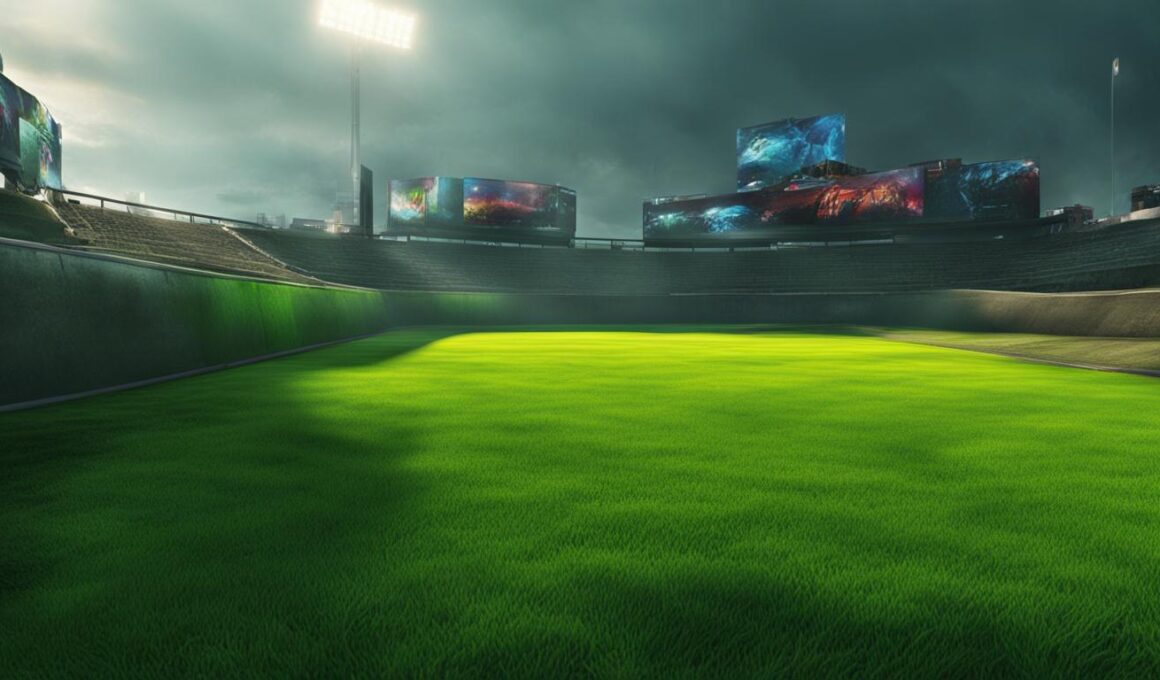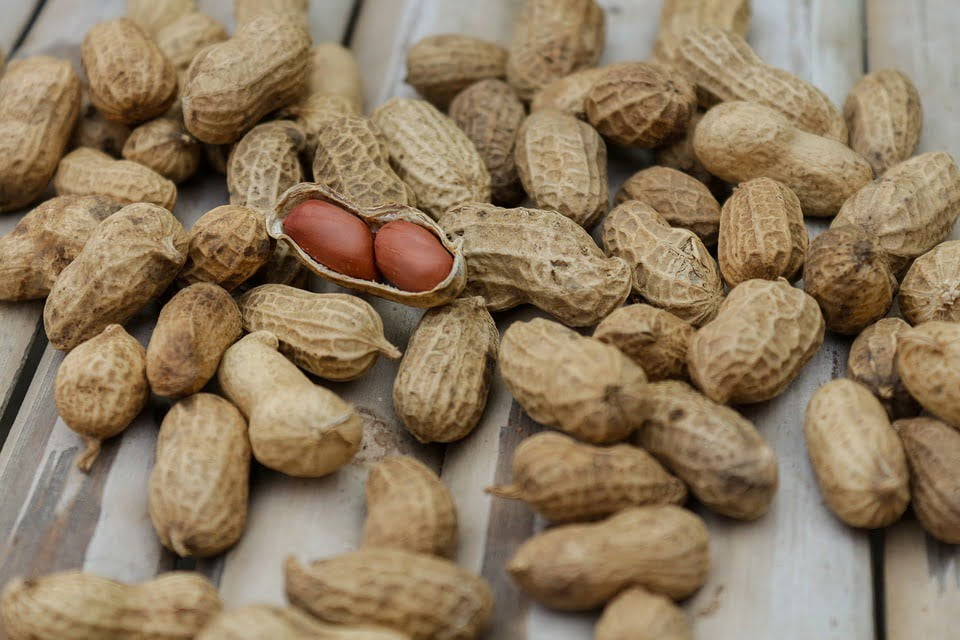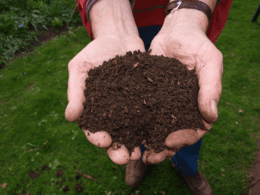Are you concerned about your lawn health and wondering if spray paint can cause grass damage? Generally, using standard spray paint on grass in moderation is unlikely to kill it. But before you start transforming your lawn with a new hue, it’s essential to understand the potential effects of spray paint on your turf and how to maintain a healthy and attractive lawn.
By applying a light amount of spray paint on your grass, you usually only cover the top layer facing upward, leaving the roots and the other side unaffected. However, saturating your lawn with too much paint can obstruct photosynthesis, potentially harming your grass. While spray painting your grass might enhance its appearance temporarily, it is not a long-term solution for lawn health. Let’s explore the implications of using grass spray paint, the ideal approach to ensure lawn maintenance and lawn coloration, and how to preserve your grass in tip-top condition.
Key Takeaways
- Standard spray paint applied in moderation is unlikely to kill grass.
- Over-saturation of spray paint can obstruct photosynthesis and potentially harm grass.
- Spray paint is not a long-term solution for lawn health and maintenance.
- Understanding the effects of spray paint on grass is essential for proper lawn care.
- Using turf-friendly products and techniques can help maintain a healthy and attractive lawn.
Understanding the Impact of Spray Paint on Your Lawn
Using spray paint on your lawn may seem like a fun and creative way to add some color or decoration, but it’s vital to consider the potential effects of spray paint on your grass and the overall grass health impact.
A crucial aspect to consider is the paint barrier created when applying spray paint to your lawn. Depending on the thickness of this paint barrier, the grass may be blocked from receiving sunlight, air, and water—essential components for healthy grass. Regularly painted grass might struggle to thrive if the paint reaches the soil or is applied repeatedly in significant amounts.
However, it’s important to note that the effects of spray paint on your lawn are often temporary, as spray paint lawn decoration is commonly used as a marker. These paint markings are typically removed by regular lawn care practices, such as mowing.
In order to fully understand the impact of spray paint on your lawn, consider the following factors:
- Thickness of paint application: A thinner coat allows for better air circulation and water penetration, minimizing the potential harm to your grass.
- Type of spray paint: Some paints are specifically designed for lawn use and are less harmful to grass health than standard spray paints.
- Frequency of application: Grass is more likely to suffer adverse effects if spray paint is applied repeatedly or in large amounts.
| Factors Affecting Grass Health | Impact on Grass |
|---|---|
| Thickness of paint application | Thicker applications block sunlight, air, and water from grass, potentially harming its health |
| Type of spray paint | Standard spray paint is generally more harmful to grass health than specialized lawn paints |
| Frequency of application | Grass is more likely to suffer adverse effects if spray paint is applied repeatedly or in large amounts |
In conclusion, while spray paint can be an eye-catching method for lawn decoration, it’s crucial to understand the potential effects on your grass’s health, keeping in mind the type and frequency of paint application. Instead of using regular spray paint, it’s recommended to choose specialized lawn paints to minimize potential harm to your grass, ensuring a healthy and vibrant lawn that can be enjoyed for years to come.
The Science Behind Grass Spray Paint and Turf Colorants
Turf colorant technology was initially developed for use on athletic fields and golf courses to maintain a visually appealing surface, particularly on warm-season grasses like Bermuda, centipede, and zoysia during their dormant, brown phases. Historical overseeding with cool-season grasses was costly and challenging, making colorants a preferred method. Nowadays, turf colorants are widely accepted for commercial and private lawns and can enhance the appearance of both warm and cool-season grasses experiencing stress or dormancy.
The Origin and Uses of Turf Colorant Technology
As a turfgrass specialist would note, the origin of turf colorants was a response to the high cost and labor involved in overseeding athletic fields and golf courses. These large-scale applications helped refine the technology and increased the demand for lawn aesthetic solutions for homeowners and businesses alike.
- Athletic Fields: Colorants help maintain a uniform green appearance on playing surfaces, improving player visibility and field aesthetics.
- Golf Courses: Golf courses rely on turf colorants, especially during the dormant grass season, to maintain an attractive appearance that meets golfer expectations.
- Residential and Commercial Lawns: Homeowners and businesses increasingly use turf colorants to enhance their lawns’ visual appeal during seasons of stress or dormancy.
Natural Ingredients and Their Effects on Grass Health
Modern turf colorants are formulated with natural ingredients, pigments, and binders, which can adhere to grass blades without being biologically harmful. These environmentally-friendly lawn care options mainly rely on biologically safe pigments to maintain the beauty of the lawn without compromising grass health.
| Ingredient | Function | Impact on Grass Health |
|---|---|---|
| Natural Turf Colorants | Provides a uniform green color to the lawn | Positively enhances the lawn’s appearance and may improve surface temperatures |
| Biodegradable Binders | Helps pigment adhere to grass blades | No known negative impact on grass health |
| Non-Toxic Pigments | Provides the desired color to the lawn | No known negative impact on grass health |
Some turf colorants offer added benefits by increasing the surface temperature, potentially reducing the dormancy period for warm-season grasses. To ensure optimal grass health, choose turf colorants that are non-toxic and explicitly designed for lawn care.
Can Painting Your Grass Lead to Long-Term Damage?
Painting grass without using the proper materials or methods may lead to long-term grass damage. Overuse of traditional spray paint can cause a buildup that prevents sunlight penetration and potentially damages the grass permanently. It’s pivotal to use turf-friendly products and techniques to avoid lasting harm to the lawn.
Several factors contribute to turf health, including proper watering, nutrition, and sunlight exposure. When grass is painted with improper materials or methods, sunlight penetration can be obstructed, causing permanent lawn effects like stunted growth, reduced nutrient absorption, and eventual plant death.
Using inappropriate coloring agents, such as standard spray paint, can also result in lawn discoloration. Traditional spray paint may leave a thick layer on grass blades, blocking sunlight and air, and leading to an unhealthy and unappealing lawn. Worse, if the paint seeps into the soil, it can affect the soil’s structure, nutrient content, and its ability to retain water, causing further damage to grass roots and overall turf health.
To ensure the continued health and vitality of your lawn, it’s essential to select the proper materials and methods for grass painting. Here are some tips to avoid causing long-term damage:
- Choose turf-specific colorants, ideally formulated with natural ingredients, pigments, and binders.
- Avoid over-applying colorants – a light coating is sufficient.
- Follow manufacturer instructions regarding mixing ratios, application techniques, and appropriate environmental conditions for lasting, safe results.
- Consider the timing and frequency of application, as excessive painting can lead to long-term damage.
By following these recommendations, you can enjoy a visually appealing lawn without compromising its long-term health and vitality. Selecting the right products, carefully adhering to application guidelines, and maintaining overall lawn care practices contribute to keeping your lawn healthy and beautiful for years to come.
Choosing the Right Time and Method for Applying Colorant
Applying turf colorant at the correct time and using the right method can help ensure a longer-lasting and more uniform coloration. The following tips and best practices provide guidance on lawn colorant application, spray paint timing, grass painting methods, and turf maintenance.
Best Practices for Lawn Spray Paint Application
- Consider the Timing: Applying turf colorant before the grass turns completely dormant and brown might extend the color’s duration. For best results, choose a time when the grass is still somewhat green and healthy.
- Protect Surrounding Surfaces: While applying colorant, take measures to protect hard surfaces and nearby plants from accidental staining.
- Follow Manufacturer’s Guidelines: Adhere to the recommended mix ratios and application instructions provided by the turf colorant manufacturer.
- Choose the Right Equipment: Use the appropriate sprayer and nozzle for even application and better coverage.
- Practice on a Less Visible Area: Before applying colorant to the entire lawn, test your application technique on a less visible area to ensure consistent coverage without over-saturating the grass.
- Use a Steady, Circular Motion: To achieve even coverage, use a steady, circular motion while spraying the lawn with colorant.
- Be Mindful of the Weather: Avoid applying turf colorant if heavy rain is expected within a few hours, as it might wash away the colorant before it has a chance to adhere properly to the grass.
Observing these best practices helps ensure successful lawn colorant application that achieves the desired aesthetic results while preserving the health of your turf.
| Best Practice | Description |
|---|---|
| Timing | Apply colorant before grass turns completely dormant and brown to extend the color’s duration. |
| Protect Surrounding Surfaces | Take measures to prevent accidental staining of hard surfaces and nearby plants. |
| Follow Manufacturer’s Guidelines | Adhere to mix ratios and application instructions provided by the colorant manufacturer. |
| Choose the Right Equipment | Use the appropriate sprayer and nozzle for even coverage and optimal results. |
| Practice on a Less Visible Area | Test application technique on a less visible lawn area before spraying the entire lawn. |
| Use a Steady, Circular Motion | Apply colorant with consistent, circular movements for even coverage. |
| Be Mindful of the Weather | Avoid application if heavy rain is expected within a few hours to prevent colorant from washing away. |
By following these best practices and paying attention to factors like spray paint timing, grass painting methods, and turf maintenance, you can achieve a beautiful and healthy lawn coloration that complements the overall aesthetic of your outdoor space.
Spray Paint for Aesthetic Purposes Versus Weed and Pest Indicators
The use of spray paint can give a temporary boost to lawn aesthetics and provide a vibrant grass color enhancement. However, achieving an even, eye-catching color does not mean you’ve addressed the underlying health challenges of your lawn.
When using spray paint for improving the look of your lawn, it’s essential to remember that it can potentially mask vital weed indicators and pest management signs. Ignoring these issues may lead to severe problems in the long run. While a lush green lawn is desirable, ensuring its long-term health should be your priority.
For a safer and more environment-friendly alternative, consider using non-toxic, chalk-based temporary paints. These products can still help you achieve the desired lawn aesthetics without potentially causing harm to your grass or the environment.
It’s essential to keep an eye on specific indicators to distinguish between healthy and unhealthy lawns. Take a look at the following table to understand better the contrasting signs:
| Healthy Lawn Indicators | Unhealthy Lawn Indicators |
|---|---|
| Uniform and vibrant green color | Uneven or dull color |
| Dense and fine-textured grass | Thin or patchy grass |
| Deep and healthy root system | Shallow and weak roots |
| Rich lawn biodiversity | Weed infestation and pest presence |
Maintaining a healthy lawn comes down to a combination of proper lawn care practices, including watering, mowing, fertilizing, and successfully managing weeds and pests.
To help you keep track of your lawn’s health while still enhancing its visual appeal, consider the following strategies:
- Use non-toxic, chalk-based paints for temporary lawn aesthetics and color enhancement purposes.
- Regularly monitor the presence of weeds and implement appropriate weed control methods.
- Monitor and address any potential pest issues, such as grubs and chinch bugs.
- Regularly perform soil tests and adjust your lawn care practices accordingly.
- Choose fertilizers, herbicides, and pesticides that are eco-friendly and compatible with your lawn type.
By balancing your efforts between achieving desirable lawn aesthetics and addressing crucial weed indicators and pest management needs, you can ensure a healthy, beautiful, and resilient lawn in the long run.
Removing Spray Paint from Grass: Methods and Precautions
Accidentally getting spray paint on your grass or needing to remove lawn markings can be a frustrating experience. Fortunately, there are some practical and safe methods for removing lawn spray paint and restoring your lawn to its natural appearance. In this section, we will discuss the various clean-up methods and necessary precautions for effective and safe grass paint removal without causing further damage to your lawn.
Tips for Safe and Effective Clean-Up
When it comes to removing spray paint from your grass, it’s essential to use safe and effective methods to avoid damaging your lawn further. Here are some steps you can follow to ensure the best results and lawn restoration:
- Mowing the lawn: Mowing your grass is the simplest method. After a few mowing sessions, the painted tips of the grass will be trimmed off, and the paint will gradually be removed. However, mowing may not be suitable for heavily painted areas or if the paint has penetrated too deep into the grass blades.
- Power washing: Using a power washer on a low setting can also help remove paint from grass. Be careful not to damage the grass by using a gentle spray and holding the nozzle at a safe distance from the lawn. Additionally, avoid power washing if the soil is already saturated to prevent creating muddy conditions that could harm the grass or cause runoff.
- Soapy water and scrubbing: For small areas or delicate grass, mixing mild detergent with water and scrubbing the painted grass using a gentle brush can help remove paint. Ensure you thoroughly rinse the area with clean water afterward to wash away any soap residue.
Avoid using chemicals like acetone, Goof-Off, or commercial paint removers on your grass as they may cause harm to your lawn and the environment.
| Method | Effectiveness | Good choice for | Precautions |
|---|---|---|---|
| Mowing the lawn | Good | Light paint application | Not suitable for heavy paint or deep penetration |
| Power washing | Very good | Large or heavily painted areas | Use low pressure and a safe distance; avoid saturated soil |
| Soapy water and scrubbing | Good | Small areas or delicate grass | Rinse thoroughly to remove soap residue |
By using these safe and effective methods to remove spray paint from your grass, you will be able to restore your lawn’s natural appearance and ensure its continued health.
Can Frost-Resistant Mums Survive if Grass Has Been Killed by Spray Paint?
Yes, frost-resistant mums can survive if the grass has been killed by spray paint. However, it’s important to provide frost and mums protection during cold weather to ensure their survival. Covering the plants with a cloth or mulch can help protect them from the frost and ensure their continued growth.
Conclusion
In conclusion, choosing appropriate lawn colorants can greatly enhance the appearance of your lawn without causing any damage. However, it is worth noting that improper use of conventional spray paint on your grass may lead to temporary discoloration, although not typically resulting in the death of your lawn. Prioritizing grass safety and maintaining a healthy turf are essential aspects of sound lawn care practices.
Understanding the various products available, such as eco-friendly spray paint specifically designed for lawn care, and applying them with the correct methods ensures that your grass remains healthy and attractive. It is essential that you utilize turf colorants designed for grass, as these products are formulated to be safe for use on your lawn, as opposed to conventional spray paint which might have adverse effects.
Maintaining a healthy and visually appealing lawn involves not just the correct use of lawn colorants but also diligent care and regular maintenance. By noticing and addressing potential issues such as weeds, pests, and nutrient deficiencies in addition to selecting the right products for occasional lawn color enhancements, you can ensure that your yard remains lush and vibrant throughout the year.












